Invented by Niranjan R. Gandhi, Victoria Palmer Skebba, Gary A. Strobel, Jeneil Biosurfactant Co LLC
In recent years, there has been a growing concern about the spread of infectious diseases and the development of antibiotic resistance. As a result, the demand for antimicrobial compositions and related methods of application has been on the rise. These compositions are designed to inhibit the growth of microorganisms, such as bacteria, viruses, and fungi, and are used in various industries, including healthcare, food and beverage, textiles, and personal care.
One of the key drivers of the market for antimicrobial compositions is the increasing awareness about the importance of hygiene and infection control. With the rise in healthcare-associated infections and the global pandemic, there is a greater emphasis on preventing the spread of diseases. Antimicrobial compositions play a crucial role in this regard, as they can be applied to surfaces, fabrics, and even incorporated into products to provide long-lasting protection against harmful microorganisms.
The healthcare industry is one of the major consumers of antimicrobial compositions. Hospitals, clinics, and other healthcare facilities require effective disinfectants and sanitizers to maintain a sterile environment and prevent the transmission of infections. Antimicrobial coatings are also used in medical devices and implants to reduce the risk of post-operative infections. The increasing number of surgeries and the growing focus on patient safety are driving the demand for these products in the healthcare sector.
Another significant application of antimicrobial compositions is in the food and beverage industry. With the increasing global population and the need for safe and hygienic food products, there is a growing demand for antimicrobial agents that can prevent the growth of pathogens and spoilage organisms. These compositions can be used in food packaging materials, food processing equipment, and even added directly to food products to extend their shelf life and ensure their safety.
The textile industry is also witnessing a surge in the use of antimicrobial compositions. Fabrics treated with antimicrobial agents are in high demand, especially in the healthcare and hospitality sectors, where there is a need for clean and hygienic environments. Antimicrobial textiles can also find applications in sportswear, outdoor gear, and even in the production of face masks, providing an added layer of protection against harmful microorganisms.
In addition to the aforementioned industries, antimicrobial compositions are also used in personal care products, such as soaps, hand sanitizers, and cosmetics. Consumers are increasingly seeking products that offer protection against germs and bacteria, and antimicrobial formulations provide an effective solution. The rise in consumer awareness about the importance of personal hygiene and the prevention of infections is driving the demand for these products.
The market for antimicrobial compositions is highly competitive, with several key players vying for market share. Companies are investing in research and development to develop innovative products with enhanced efficacy and safety profiles. The development of eco-friendly and sustainable antimicrobial compositions is also gaining traction, as consumers and industries become more conscious of the environmental impact of their choices.
In conclusion, the market for antimicrobial compositions and related methods of application is witnessing significant growth due to the increasing awareness about hygiene and infection control. The healthcare, food and beverage, textile, and personal care industries are the major consumers of these compositions, as they seek effective solutions to prevent the spread of diseases and ensure the safety of their products. With ongoing research and development, the market is expected to expand further, offering new opportunities for innovation and growth.
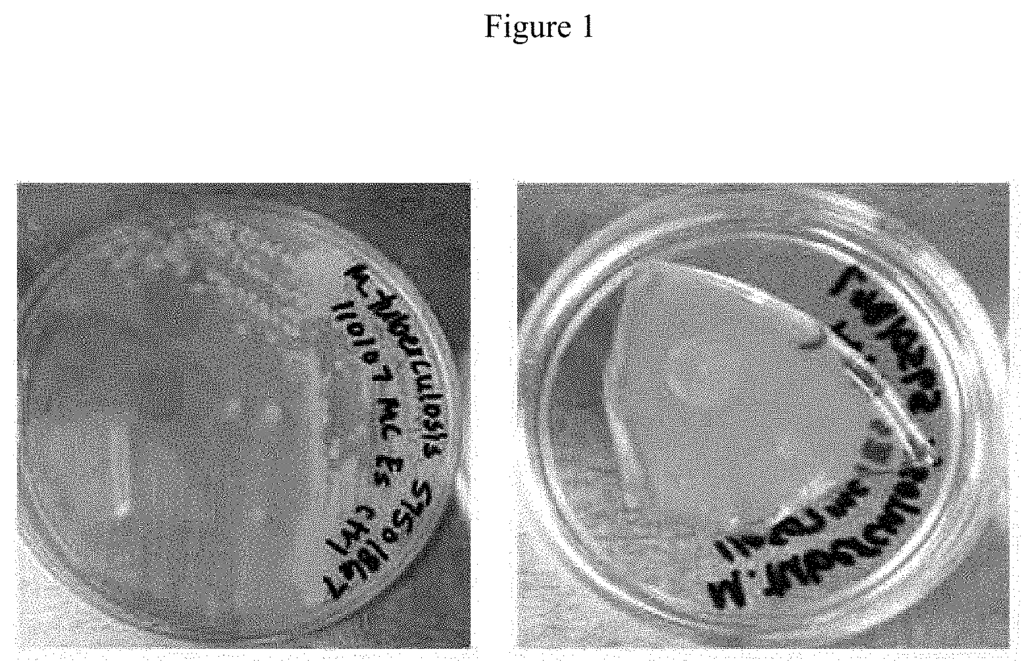
The Jeneil Biosurfactant Co LLC invention works as follows
Antimicrobial compositions containing one or more compounds generally recognized as safe to consume by humans, and related methods, such compositions as well as methods can be used in a variety of agricultural, industrial and building products, pharmaceutical, personal care and/or other applications.
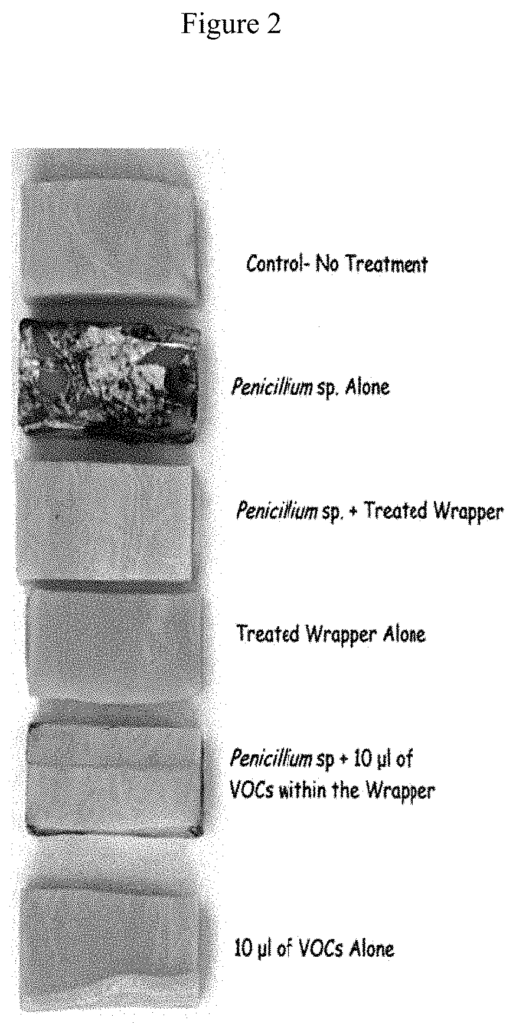
Background for Antimicrobial compositions, and related methods of application
The content of the ASCII text file of the sequence listing named 11159_DIV_CON_II_Jeneil_ST25.txt, which is 4.00 kb in size was created on Oct. 9, 2019, is incorporated herein by reference in its entirety.
Much progress was made in the identification and development biocides to control various molds and plant diseases. Most commercial pesticides and biocides are carcinogens, or toxic to non-target animals or wildlife. As an example, methylbromide is used widely as a soil fumigant and to treat microbial infections after harvest. The toxicity of methylbromide to humans and the negative effects on the environment will eventually lead to its discontinuation. Recent efforts have been focused on the identification and development natural or biomimetic compounds that demonstrate comparable antimicrobial/pesticidal effects.
One approach is to look at endophytes, and their associated volatile byproducts. In the art, endophytes are microorganisms that reside in the interstitial space of living plant tissues. They are not generally considered parasitic. Endophytes associated with rain forest plants are of particular interest due to their antibiotic-like volatile by-products. It has been demonstrated that several members of the Muscodor family (M. albus M. roseus, and M. viigenus) produce volatile by-products with antibiotic or insecticidal properties. The by-products of each species include naphthalene or azulene. These compounds can be toxic, or unhealthy in other ways, and their mixtures with other by-product components are not acceptable for many end use applications. There is a continuing search to find natural compositions, and biomimetic compositions that are free of such compounds and have effective anti-microbial properties.
In view of the above, it is the object of this invention to provide flavors that have antimicrobial components and/or methods of their use. This will overcome various shortcomings and deficiencies of the prior arts, including those described above. It will be clear to those in the know that certain aspects of this invention may meet certain objectives while other aspects may meet other objectives. It is possible that not all aspects of the invention will meet each objective equally. The following objectives can be viewed alternatively with respect to one aspect of the invention.
It can be the object of the invention to provide Muscodor species, and a volatile byproduct thereof, without naphthalene or azulene related compounds (non-GRAS compound), in conjunction with a method for the prevention, inhibiting and/or eradication microbial infections.
It can also be an object of the invention to provide a method that combines a species, or strain, and a volatile by-product associated with it in conjunction with non-indigenous media or substrates for use against microbial infections.
It can also be an object of this invention to provide a system or related methodology that is suitable for human and animal food and produce, plants, parts of plants, seeds, agricultural crops, and other organic materials. This includes packaging, building material, fibers, fabric, clothing articles and pharmaceutical applications.
It can also be an object of this invention to provide, as an alternative or in conjunction with the above, a variety of biomimetic compositions that demonstrate antimicrobial activity similar to Muscodor species.
The present invention can provide one or more compositions that are edible or safe for human consumption.
It can also be an object of the invention to provide, in combination with a medium, composite, or article, a biomimetic, non-natural composition for the prevention, suppression, and/or eradication microbial infections. Another object of the invention is to provide a system, composite, and/or article that can be used in the context described above or shown elsewhere.
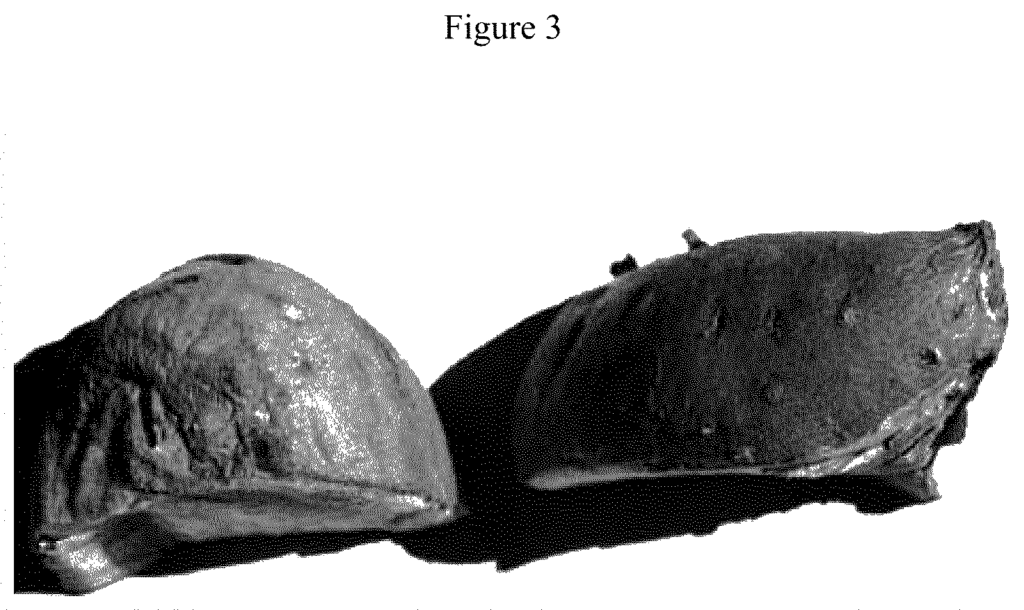
It can also be an objective of the present invention, to provide a treatment method that includes such a composition without restriction as to carrier, substrate, or medium.
The following summary and descriptions of specific embodiments will reveal other features, benefits, and advantages. These will be easily apparent to those who are familiar with antimicrobial compositions or related treatments. These features, benefits, and advantages are apparent when viewed in conjunction with the examples, data, and figures, and any reasonable inferences that can be made from them, or by considering the references included herein.
Partially, the present invention is directed at a system that includes a strain M. crispans or volatile by-products thereof, or vapors of volatile byproducts, and a non-indigenous substrate or medium. These media or substrates may be described in this document or understood by anyone with knowledge of the art. This strain can be in the form a pure biological culture, with or without a carrier component that is suitable for contact between media and substrates, or for end-use applications. It must also be viable enough to produce a volatile byproduct. According to this invention, the by-product, or modification of a M. crispans by-product, or vapor thereof, are as described in other parts of this document.
The present invention is also directed at using such a system, and/or volatile fungal byproducts thereof, to provide an antimicrobial effect. A method of this type can include providing a nonindigenous medium or substrate capable of supporting microbial growth or activity; and contacting the substrate or medium with a M. crispans strain, a volatile product thereof and/or vapour from such by-product. In some embodiments, the strain can be placed on, around or near a substrate or medium. In other embodiments, M. crispans’ volatile by-products or modified by-products or a corresponding vapour can contact or infuse such a substrate or medium.
The substrates can include a food item or produce, a packaging element for a perishable food item or item, fiber, clothing, or clothing items, a building component or component of a construction, soil, garbage, or refuse. This contact can be prophylactic or bioactive in terms of microbial presence.
In part, the present invention can be directed to a non-naturally occurring antimicrobial composition, whether the components thereof are naturally-derived, chemically-synthesized or a combination thereof. Compounds selected from the alcohol, aldehyde ketone acid, and/or acid esters components of a Muscodor sp. can be used in such a composition. By-product compositions, compositions that are absent of fused aromatics, compositions with substituted aromatics, and compositions containing hydro derivatives can all be included. This composition may include an acid component chosen from acetic, isobutyric, or propanoic acids, among others.
The present invention is directed, in certain embodiments to a naturally derived antimicrobial formulation comprising an acid component C2-about C5; an ester component C2-about C5; and at the least two C2-about C5 component isolable from a vaporous by-product from an isolated culture Muscodor crispans. Such a composition can have a different pathogen profile than a pathogen profile of an isolate, cultured Muscodor species, a vaporous by-product thereof This acid component may be chosen from isobutyric, propanoic and combinations thereof. This ester component may be chosen independently from C4 ester, C5 ester acetates, and combinations thereof.
In certain embodiments “without limitation”, such a composition may contain 8-10 components that are otherwise isolable from a volatile M. crispans by-product. In certain embodiments, every component of a composition like this can be isolated from a volatile byproduct. Each component of such a composition, which can be naturally-derived can be a fermented product. Fermentation can be bacterial, fungal, or yeast. Each component of a composition of this type can be recognized as generally safe for human consumption by Chapter 21 of the United States Code of Federal Regulations, and/or corresponding sections or provisions thereof.
In certain non-limiting embodiments such an isolatable ingredient can be isobutyric acids. Propanoic acids can at least partially substitute isobutyric acids in certain embodiments. Such or other non-limiting examples can include 2-butanone as an isolatable element. In certain embodiments, 2-butanone can be replaced at least partially by acetic, propanoic, or a mixture thereof. In these or other non-limiting examples, the isolatable ingredient can be ethanol. In some embodiments acetic acids can be substituted at least partially for ethanol. No matter the amount or identity of an ester component, acid component, and/or isolatable ingredient, a composition derived from nature can include a surfactant. In some embodiments, biosurfactants can be added. A biosurfactant is not limited to a monoorhamnolipid or a dirhamnolipid.
The present invention may also be directed towards a synthetic antimicrobial composition that is not derived from natural sources. This composition can contain a C2-about C5 ester component, a C2-about C5 acetic component, and at least 2 C2-about C5 components that can be isolated from the volatile by-products of a cultured isolated Muscodor crispans. Or a volatile byproduct thereof. These components, such as the ester or acid described above, can also be illustrated elsewhere in this document. A surfactant can be included in an antimicrobial composition. In certain non-limiting embodiments of this type, the surfactant component can be selected from monorhamnolipids, dirhamnolipids and combinations thereof.

Partially, the present invention is directed towards a biomimetic antimicrobial composition, comprising a mixture of liquid compounds selected from C2 up to approximately C5 alcohols and aldehydes and ketones and combinations thereof and sub-combinations, such as a composition that was not isolated from Muscodor species. This liquid mixture, as discussed elsewhere in this document, can be volatile even at ambient or room temperatures. The term “about” is used to describe such a composition, and its compounds. As would be understood by those of skill in the art, the term “about” can refer to carbon and/or Methylene homologs having corresponding molecular mass and/or structural isomerism, limited only by the mixture with other components and compounds, and the at least partial volatility of the composition when exposed to ambient temperature or room temperature. In certain non-limiting embodiments of this composition, alcohol, aldehyde and ketone compounds can be selected from components in a biomimetic M. crispyans by-product composition of the type described below. Compounds isolated from bacterial ferments, chemically synthesized compounds and combinations thereof can be included in such a composition. In certain embodiments, a composition of this type can contain an acid component chosen from acetic, isobutyric, or propanoic acids, and combinations thereof.
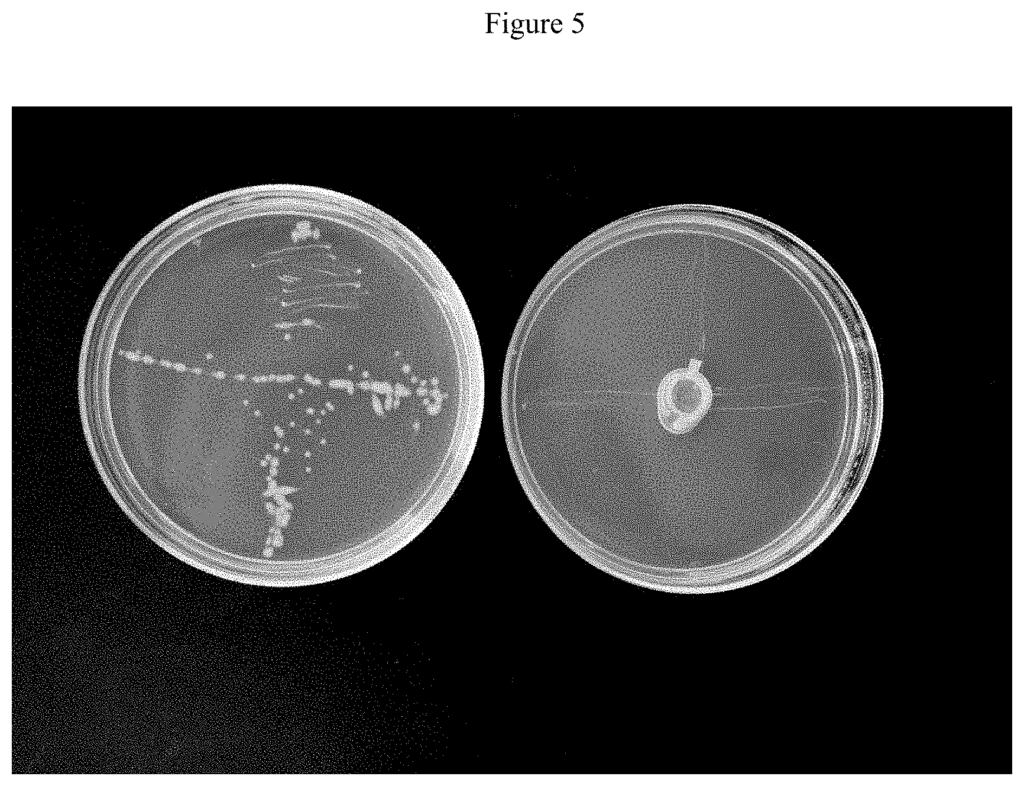
Click here to view the patent on Google Patents.
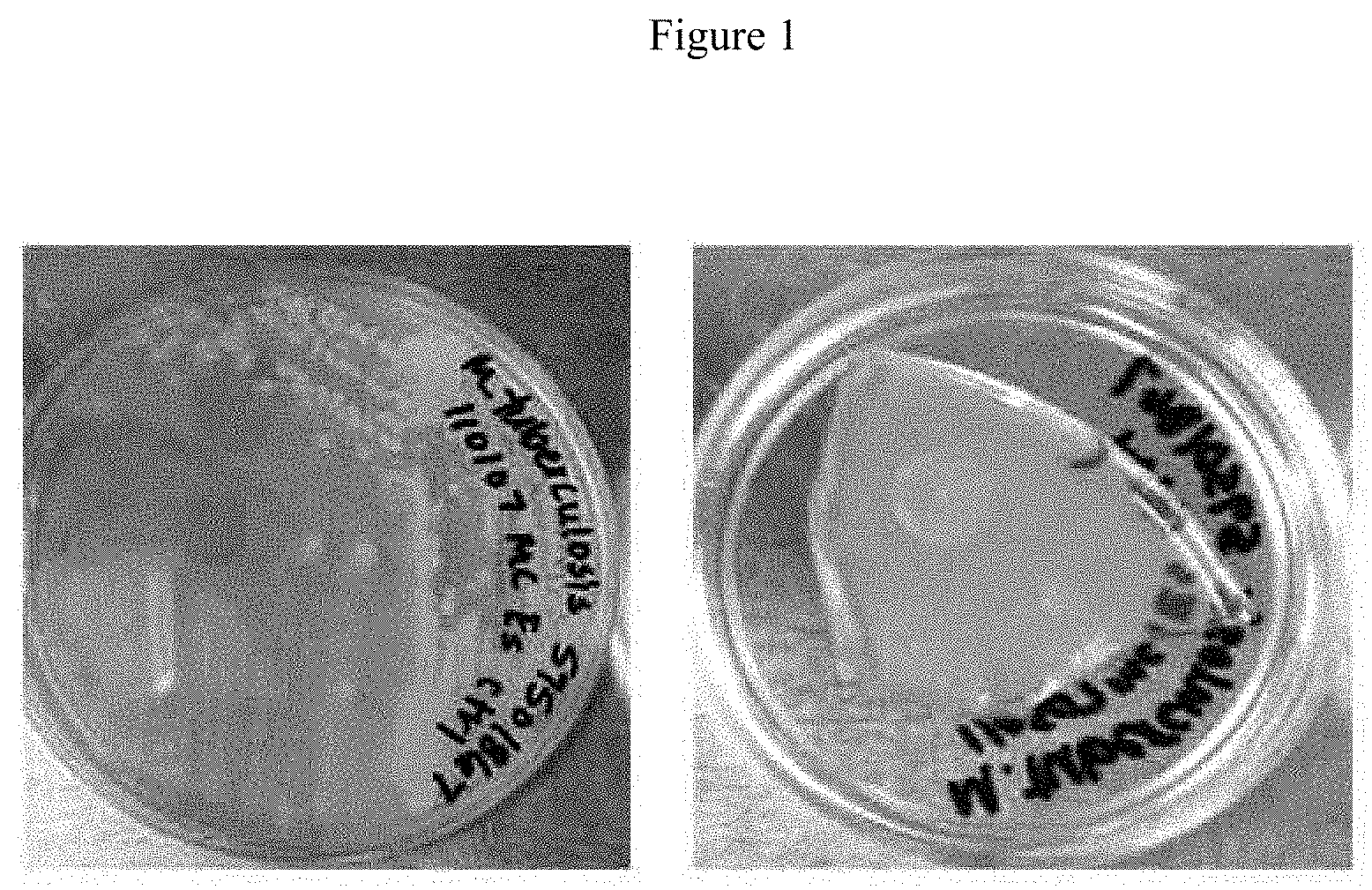
Leave a Reply